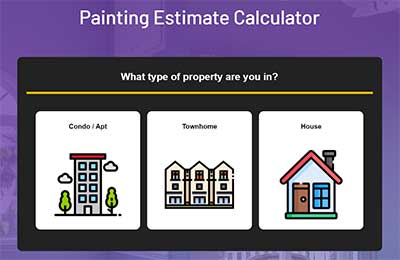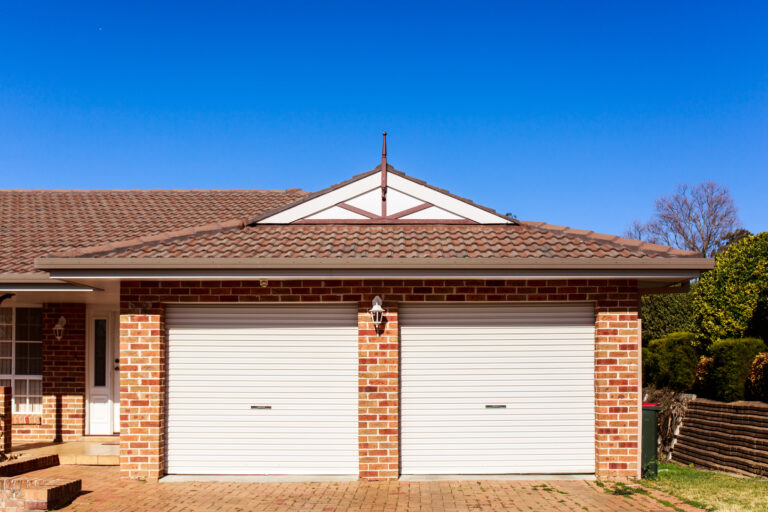Painting your garage walls is more than just a cosmetic upgrade—it’s an important step for long-term protection and durability. Most garages see a lot of wear and tear, from vehicle traffic to exposure to harsh chemicals. Choosing the right paint ensures your garage walls, floors, and ceilings can withstand the challenges they face daily.
Key Takeaways
- Properly painting your garage walls protects against dust, moisture, and scuff marks.
- The best paint for garage walls is typically a durable, water-based interior paint with low VOCs.
- Epoxy coatings are highly recommended for garage floors due to their stain-resistant and long-lasting properties.
- A semi-gloss finish is ideal for garage walls as it reflects light and is easy to clean.
- Thorough wall preparation, including cleaning and priming, is essential for a smooth and long-lasting paint job.
- Applying at least two coats of paint ensures even coverage and durability, particularly in high-traffic areas.
Why Painting Your Garage Walls Matters
Painting garage walls does more than make them look good. Unpainted walls are prone to collecting dust, absorbing moisture, and even growing mold over time. Plus, they tend to show scuffs and wear more quickly. A fresh coat of paint acts as a protective barrier, making surfaces easier to clean and more resistant to everyday damage. Properly painted garage walls are easier to maintain and add value to your home.
A well-painted garage wall also reflects more light, making the space brighter. This is particularly helpful for anyone using the garage as a workspace or for storage. Whether you want to turn your garage into a workshop or simply maintain a cleaner, more polished look, painting is a must.
What is the Best Type of Paint for Garage Walls?
There are several paint options available, each with its own advantages. The most popular types for garage walls include latex paint, acrylic paint, oil-based paint, and epoxy paint.
Latex Paint
Latex paint, also called acrylic latex, is water-based and easy to apply. It’s beginner-friendly, dries quickly, and emits fewer fumes than other options. This type of paint is flexible, meaning it resists cracking over time, making it ideal for garages with temperature fluctuations. However, latex paint may require multiple coats for adequate coverage, particularly on rough or unprimed surfaces.
Acrylic Paint
Acrylic paint is more durable than latex paint, offering better resistance to wear and tear. It provides strong adhesion on surfaces like concrete and masonry, making it a great choice for garage walls. However, it is a bit pricier and dries faster, which can make application more challenging in hot or dry conditions.
Oil-Based Paint
If durability is your top priority, oil-based paints are an excellent option. These paints provide a hard, protective layer that withstands high traffic, heavy impacts, and exposure to chemicals. Oil-based primer is often required for proper adhesion, especially on metal surfaces. However, oil-based paints can emit strong odors, take longer to dry, and may yellow over time in poorly lit garages.
Epoxy Paint
For maximum durability, epoxy paints stand out. This two-part coating system creates a tough, glossy finish that is highly resistant to stains, chemicals, and abrasions. It’s a popular choice for garage floors but can also be applied to walls. While epoxy is more expensive and requires careful application, it offers unmatched protection, making it worth the investment.
Exterior Paint or Interior Paint Which is Better?
Many people wonder whether to use interior or exterior paint for their garage walls. While a garage is technically an indoor space, it often experiences harsher conditions like moisture and temperature fluctuations. So, which is the right choice?
Interior paint is generally the best option for interior garage walls. It’s designed for indoor conditions, dries quickly, and emits fewer harmful fumes. Exterior paints, on the other hand, often contain anti-mildew additives that can release toxic chemicals in enclosed spaces, posing health risks.
Stick with interior latex paint or acrylic paint for your interior garage walls, as they provide the right balance of durability and safety. If you’re worried about moisture or mold, there are interior paints specifically formulated for high-humidity areas, offering added protection against mildew growth.
Choosing the Best Finish: Flat, Satin, or Semi-Gloss
The finish you choose for your garage walls plays a big role in durability and ease of cleaning. In general, avoid flat paint for garages. While flat finishes can hide wall imperfections, they are difficult to clean and absorb stains easily.
Instead, opt for satin or semi-gloss finishes. Satin offers a subtle sheen and is moisture-resistant, making it easy to wipe clean. For the most durability, though, semi-gloss is the way to go. It’s resistant to stains and scratches and reflects light, making your garage feel brighter. Semi-gloss is particularly useful in garage interiors that see a lot of traffic or use.
Recommended Paint Colors for Garage Walls
The color of your garage walls can impact the overall feel of the space. Neutrals like gray, beige, or light blue are popular choices. These colors reflect light well, helping to brighten up darker areas. A well-chosen paint color can also help hide dirt, keeping your garage looking cleaner longer.
For ceilings, stick with white or a slightly lighter version of your wall color. This will help brighten the space by reflecting more light, especially in garages with limited natural light.
If you want to add a pop of color, consider using an accent wall. However, avoid dark colors on the main walls, as they can make the space feel cramped and show every bit of dust or dirt.
Prepping Your Garage Walls Before Painting
Before you start painting, make sure to properly prepare your garage walls. Whether you’re working with unpainted drywall, concrete, or previously painted surfaces, prep work is key to ensuring long-lasting results.
If your garage has unpainted drywall, applying a drywall primer is essential. This seals the porous surface, allowing the paint to adhere evenly. Skipping the primer can lead to patchy, uneven paint that soaks into the drywall.
For concrete walls, it’s important to fill any cracks or holes before applying paint. Concrete is porous, so using a primer specifically designed for masonry or concrete ensures the paint adheres smoothly and lasts longer. Without this step, the paint for garage walls may soak unevenly, leading to a blotchy finish.
For old paint or oil-based paints, you’ll need to sand down the surface and apply a good surface primer. This helps the new paint bond properly, ensuring a smooth finish.
No matter the surface, clean the walls thoroughly before painting. Use a shop vac to remove dust, followed by a solution of water and dish soap to remove grease. If you’re dealing with stubborn stains, a degreaser might be necessary. After cleaning, fill any cracks or holes with spackle (for drywall) or a suitable filler (for concrete) and sand smooth.
Applying Garage Wall Paint: Tools and Techniques
Once your garage walls are prepped and ready, it’s time to start the painting. Having the right tools is crucial for a smooth finish. You’ll need a paint roller with an extendable handle, a paint tray, and an angled brush for cutting in around edges and corners.
Start by cutting in around the edges of the walls with a brush, then use the roller for the larger areas. Apply thin coats of paint to avoid streaking and uneven drying. Two coats are usually sufficient, but you may need more depending on the wall texture and color.
Between coats, let the paint dry completely. Thin, even coats are easier to maintain and less likely to chip over time.
Painting Garage Ceilings: Best Practices
Your garage ceiling deserves just as much attention as the walls. While you can use the same paint as the walls, a semi-gloss finish will work best for ceilings as it reflects more light and is easy to clean. Like with the walls, use a roller for the large areas and a brush for cutting in around light fixtures and edges.
How to Paint Your Garage Floors for Durability
Garage floors take a lot of abuse—whether from vehicle traffic, spills, or dropped tools. Applying a coat of epoxy-type coating or garage paint can help protect your garage floor from cracks, stains, and moisture damage.
Epoxy is the best choice for garage floors. This two-part coating forms a durable, protective layer that’s resistant to chemicals and abrasion. It’s easy to clean and gives your floor a sleek, high-gloss finish.
Before you begin clean the floor thoroughly using a pressure sprayer and a degreaser. Once the floor is dry, etch the concrete using an acid solution to open up the surface, allowing the epoxy to bond effectively. For best results, apply multiple coats, ensuring each layer dries fully before applying the next.
Common Garage Wall Materials and How to Paint Them
Not all garages have drywall. Some have concrete, brick, or metal surfaces, and each requires a different approach. For concrete walls, you’ll need to fill any cracks before painting and use a primer to prevent the paint from soaking into the porous surface. Latex or acrylic paint works well for concrete.
For brick walls, clean the surface thoroughly with a stiff brush, then apply a masonry primer. Latex-based paint is typically the best choice for brick. Metal surfaces, such as garage doors or shelving, require an oil base paint for durability and rust resistance.
Conclusion: Transform Your Garage with the Right Paint
Painting your garage is a worthwhile investment, both for aesthetics and practicality. With the right paint, you can protect your walls, floors, and ceilings from wear and tear, making the space easier to maintain. By choosing high-quality paint, prepping the surfaces properly, and using the right tools, you can transform your garage into a clean, professional-looking space that will stand the test of time.
Now that you know the best paints and finishes for your garage, it’s time to start your project. If you’re looking for expert help to ensure a smooth and professional paint job, OnDemand Painters is ready to assist. Whether you’re tackling the walls, ceiling, or floors, we’ve got the experience and skills to bring your vision to life. Let’s get started and turn your garage into a functional and visually appealing space. Grab your tools—or call OnDemand Painters—and start painting!
FAQ
Can I use exterior paint on my garage walls?
While exterior paint is designed for outdoor durability, it’s not ideal for indoor use in garage walls because it may contain chemicals that emit volatile organic compounds.
What’s the best paint for garage walls?
The best paint for garage walls is usually water-based interior paint with low VOCs, like the Sherwin-Williams brand, which provides durability and minimal odor.
How many coats of paint do I need for my garage?
You should apply at least two coats of garage wall paint for even coverage, and durability, and to help prevent scuff marks and stains from gardening tools
What’s the best way to clean garage walls after painting?
Use a mild detergent and a soft cloth to gently wipe down the walls to remove any dirt or scuff marks without damaging the finish coat.
Can I use oil-based paint on my garage floor?
Though oil-based paint is durable, epoxy coatings are a better option for the garage floor due to their stain-resistant and long-lasting properties in garage space.


















